
Rhostyllen
A history through pictures

The History of Rhostyllen School 1900 -
Timeline:
1868 – Bersham National School built to attempt to give an education to the poorest children
1870 – Formation of local elected School Boards – Bersham Board School set up
1876 – Principle established that all children should have a free elementary education
1876 – Bersham School extended to house Infants, Junior Boys, Junior Girls sections
1880 – School leaving age 10
1893 – School leaving age 11
1899 – School leaving age 12
1900 – Infants left Bersham for the newly opened school in Rhostyllen
1904 – Junior Girls left Bersham for second new school in Rhostyllen next to Infants School
1904 – School Boards taken over by Local Education Committee of Rural District Council
1918 – School leaving age 14
1935 – Bersham School renovated ready for reorganisation
1936 – Rhostyllen Junior Girls enlarged ready for reorganisation into Senior School
1937 – Opening of Rhostyllen Senior School. Junior Girls moved back to Bersham
1937 – Establishment of Bersham Junior Mixed School
1944 – Senior School in Rhostyllen became a Secondary Modern School with leaving age raised to 15
1960 – Opening of Bryn Offa School. Rhostyllen Secondary Modern School renovated as Junior School
1961 – Bersham closed and all Junior pupils moved to Rhostyllen. Infants remained at original school next door
1969 – School leaving age 16
1992 – Combined Infants/Junior School remodelled on site of Junior School. Infants building to be demolished
Rhostyllen School -
The Education Act of 1870 led to the formation of local School Boards to build schools funded by the rates and The Education Act of 1876 established the principle that all children should receive a free elementary education up to the age of 10. The Bersham School Board was set up to cater for the education of children in Rhostyllen, Bersham, Frondeg and Coedpoeth. At Bersham it was becoming increasingly obvious that universal education for all after 1876 would lead to a severely overcrowded school and that a new building would be required.
The Board decided that a new school would be built in Rhostyllen and that it would become the local Infants School for all children in the greater Rhostyllen and Bersham areas. Bersham would remain the Junior Section. After various meetings seeking suitable sites in October 1898, an offer of £123.1.0 was made to the Reverend Thomas Evans of Hope Rectory for land near to Colliery Road and adjoining Liver Cottage Gardens (home of the colliery manager: see 1922 Church Street on Street Scenes and Landmarks-
The total cost was £1917.17.0, made up of: Site -
On 19th February 1900 the children and teachers transferred from Bersham.
The school logbooks, filled in regularly by the Head Teacher, are available to view at the Denbighshire Record Office situated in the old jail at Ruthin. To protect the privacy of past pupils still alive, there is a 75-
There are in fact three logbooks for what was the Infants’ Department of Bersham Board School, before becoming the Rhostyllen Infants’ School of Denbighshire Education Committee.
- January 14th 1876. The very first entry at Bersham was by the Headmistress, Mary Rogers
- February 19th 1900. The children moved to the newly opened school in Rhostyllen. Some of the entries in this second log still stem from Bersham days
- September 20th 1907. Mary Bishop was now the Headmistress (until 1920). This book continued until the school was shut in 1961.
Mrs Bishop noted on the first day: “Began work here today (Mon). No cupboard yet ready. Walls not dry enough to hang pictures; and no ladder yet up for use. No doubt Mr Bustrove will make it convenient to fix the new clock during the day”. On the next entry she wrote: “Timetable: am working on a new timetable. It awaits HMI signature”. Later another entry stated: “No water; the water has not yet been turned on. Mechanician visited school, glad to see him”.
On 13 November 1902 the Headmistress outlined the dimensions of the school: the size of the main room was 1120 square feet and the two classrooms were 363 square feet each, making a total of 1846. The floor to ceiling height was approximately 16’ 0’’. Presumably she had to report on the number of children being taught in the available space. On August 25th 1902 she stated there were 37 boys and 48 girls on roll after the summer holidays, after transferring 16 boys and 22 girls to Bersham (Standard 1). In July 1900 52 children had been transferred. In May 1905 the school catered for 119 children, a manageable situation as there were now four classrooms: on 24th May 1904 Miss Bishop wrote that the school was closed so that workmen could fit a partition across the main room. By April 1910 it was noted in a School Report to the Education Committee: “It is impossible to do good work in the 2nd class owing to the overcrowded state of the room; there are 62 names on the roll and the accommodation is for only 37”. There was even a mention of unexpected visitors on 25th November 1910: “Subjoined are the names of three children who attended for 12 times altogether. They belong to a family of caravan travellers who have pitched in the village”.
In her Annual Report to the School Governors in January 1902 Mary Bishop wrote: “The teaching is diligent and very fair progress is being made”. The three members of staff were herself, Elizabeth Huxley and Alice Davies. Miss Scotson had resigned in June: “The children contributed to a fund to give her a present – a good album”. In April 1906 Miss Bishop praised the teacher who had replaced Miss Scotson: “The second class have been carefully taught by Miss Huxley and are a bright lot of children”. On 5th November in the same year the Head wrote: “Received a letter from Miss Huxley reporting the death of her brother”. Sadly she also noted the death of Miss Huxley’s sister on 3rd July 1908. In 1907 there was to be another staff change: “I regret to record that Miss Alice Davies resigns her post at the end of the present month. She began duties 11 years ago”. Miss Davies was obviously one of the teachers who transferred from Bersham.
School was not all hard work for the children; there were frequent references to ‘treats’. A half day holiday was granted on St. David’s Day “in honour of the Patron Saint”. Attendance at school was much affected on the first day of the annual pleasure fair in Wrexham. The school was closed in the afternoon on 18th September 1900: “a goodly number of children going to a ‘Sunday School Treat’”. The Wrexham Carnival was mentioned in September 1910: “…the children’s minds are full of it”. On October 9th 1907 the children were taken for a walk to Bersham as a reward for good attendance: “They came back at 2.30 pm with bright happy faces – baskets full of ‘something to show’”. On July 30th 1909 Mr J Hughes, Esless Hall, sent an invitation for the Infants to go strawberry picking in his fields: “It was a delightful time – a recorded nature walk”. Christmas was always mentioned: in 1927 “Christmas tree for children. Mr James Williams (Chairman of Managers) acted as Father Christmas” {See picture of Esclusham Below Parish Council in 1956 – Mr Williams is on the top row third from left}. On one occasion a child brought a tortoise to school: “Had much delight in watching its movement and timing its pace. ‘Hare and Tortoise’ had been the subject of the morning’s story”.
On 22nd October 1909 Mr Francis Blew is mentioned for the first time; he became Chairman of the School Managers at Bersham and Rhostyllen {See his family history under ‘Bersham School’}. In December of that year he distributed prizes and certificates for good attendance. The Head Mistress noted: “Kind friends have feverishly subscribed to our ‘Treat Fund’ in money and kind and we were enabled to give each child a present to take home”. The first school concert took place in February 1901, followed by another in March 1903. By January 1913 a full programme was printed for the Prize Distribution; it included the Chairman’s Address, songs, recitations, the two National Anthems and the distribution of prizes by the Mayor of Wrexham in chain of office. A year earlier the Head Mistress had written of the children: “Examined work of 2nd class on Tuesday. Some very good results have been achieved. Unfortunately singing is weak. The voices are not tuneful as I would like, but the children like singing. The recitation was particularly good. The writing is very good”.
The children’s attendance at school was a major pre-
Many absences could not be helped, however. Mrs Bishop wrote on 14th June 1901: “Fever prevalent. Nine cases sent to hospital. Homes disinfected by sanitary officers. One of the boys died in the school holidays”; October 1902: “Still a few cases of measles”; February 21st 1904: “I have received a notice from the Rural district Council requiring the Bersham Board to shut Rhostyllen Infants School for three weeks in consequence of the continued epidemic of whooping cough”; May 21st 1909: “Eight cases of Ringworm in the Babies’ class. Children to be kept at home until safe from contagion” {Miss Bishop always referred to the Nursery section as the Babies}. On 22nd October 1909 things became more serious: “29 cases of measles. School to be closed for a month until Monday 22nd November”. Bronchial pneumonia was mentioned in 1915 and the school was again shut in July 1918 owing to an epidemic of whooping cough.
It was recorded that Mrs Bishop visited Bersham School for meetings on certain occasions. She also paid a visit to the Liverpool School Board to gain information on their Religious Education syllabus. On 19th June 1902 she wrote: “Received the Teacher’s Handbook of the Bible and the Board resolved to adopt the syllabus similar to the Liverpool Board”. She noted at one point: “Received the grateful tidings of £10 increase to my present salary”. Her saddest entry was on 29th May 1900: “The Master is dead and we buried his body today. I have known him for 25 years and mourn for him” {She was referring to Mr George Bristow, Head of the Boys’ Department at Bersham, who lived in the School House. Details of his illness are given under ‘Bersham School}.
Important dates in history were also recorded in the logs:
- March 1st 1900 “Loud hurrahs for the relief of Ladysmith” {During the Second Boer War in South Africa Britsih forces were surrounded in Ladysmith for 118 days and lost 3000 men. The siege was finally broken on 28th February}.
- May 24th 1900 “ Queen’s birthday. Half day for her birthday and the relief of Mafeking” {Queen Victoria was 81 and died eight months later. The town of Mafeking was besieged in the Second Boer War for 217 days. The lifting of the siege was a decisive victory for the British and a crushing defeat for the Boers}.
- June 1st 1902 “Proclamation of peace in South Africa” {The Boers surrended and the peace treaty was signed on 31st May}.
- June 26th 1902 “Coronation of Edward VII” {His coronation was due on this date but two days earlier he was diagnosed with appendicitis; he had a radical operation and recovered. The coronation actually took place at Westminster Abbey on 9th August}.
- May 13th 1910 “The King is dead. The school will close on Friday 20th for the funeral” {Edward VII died on 6th May aged 68. He was buried at Windsor Castle on 20th May}.
- 23rd June 1911 “This week is a general holiday in commemoration of the coronation of King George V and Queen Mary. Children were treated to tea and received a commemoration mug. On Friday they assembled in the yeard and sang national songs (Welsh and English) and had a good display of flags” {The coronation took place at Westminster Abbey on 22nd June 1911. Esclusham Below Parish Council issued a commemorative cup and saucer to mark the occasion}.
- 14th July 1911 “Thursday was a national holiday in commemoration of the Investiture of His Royal Highness, the Prince of Wales, at Caernarvon” {Edward VIII was officially invested as Prince of Wales on 13th July 1911. In 1936 he became King but abdicated}.
- 6 June 1912 “School closed on Wednesday. Gorsedd held in Wrexham to proclaim the Welsh Eisteddfod of 1912”.
Mrs Bishop would see the school through the four years of the First World War before her retirement in 1920. Her first reference to the war was in October 1914: “The little ones this week brought vegetables to send to Belgian refugees – this distribution consisted of 23 lbs of potatoes, ½ lb of onions, 2 lbs of carrots, ½ lb of onions, a very large turnip and cabbage”. In January 1916 the children engaged in a “‘White Cross Crusade’ to help disabled soldiers and their dependents belonging to the Welsh troops”. The concert appears to have been very well supported:
The children sold flags for the Red Cross Fund in October 1916. The school was closed on June 14th 1918 so that the teachers could fill in forms in connection with Food Rationing for the National War Service. There was a National Celebration for Peace day on July 19th with a parade throught the village to welcome returned soldiers, who were entertained to lunch by the Rhostyllen Parish Council. The children distributed cake to them and had their pictures taken with various groups.
Mrs Bishop’s resignation statement was entered on 29th March 1920: “I have this day ended my position as Headmistress of this Department after 34 years 9 months of continuous service. I wish my successor every possible success and good wishes in the future”. Censuses from 1861 onwards give us a good insight into Mrs Bishop’s life: she was born in 1854 in the Foundry House, Rhostyllen. Her father, Richard Griffiths, was a brass and iron founder employing four men. In 1871 she was described as a ‘Milliner’ still living at home. Ten years later her home is Long Ashton, Somerset, where she was married to William Bishop, who was twenty years older than her. He had three chidren all born in Staffordshire. By 1891 she was back home in Rhostyllen living with her mother, Margaret Griffiths, in Bank Cottage (present Poplar Road) with three children of her own, two born in Somerset and the third born in Rhostyllen. Even though the form stated ‘Married’, her husband was not listed. Her occupation was now ‘Teacher – Board School’. She was a widow living at 109 Henblas Road on the next census and was Headmistress of Rhostyllen Infants. The final listing showed her aged 57 living at Sunnyside, Henblas Road, when she still had another nine years to go as head of the school.
The new Headmistress of the Infants School made her first entry on June 1st 1920: “Miss A Rogers commenced duties as Head Teacher”. She was to continue until August 1955, when she could well have been 70 years of age. Former pupils born during or just after the second world war will remember her and the staff of that era: Miss Lilian Edwards {who retired to Henry Street; her grandfather was the smith in Bersham, her father, Bartlem, the sub-
Miss Roger’s entries in the log book give us a good insight into the history of the times. On March 1st 1921 she wrote: “School closed all day in honour of the celebration of the stones being laid in connection with the District Council’s first housing scheme”. On 4th March she continued: “Ceremony for stone laying. Afterwards they came to school and oranges and biscuits were distributed – given by Sir Watkin Williams Wynn”. Two coal strikes were mentioned – May 3rd 1921: “Owing to coal strike the Education Committee granted 6d per day for each child for two meals. Breakfast at 8.30 and dinner at noon”. There was a later entry stating that children were fed for the last time. On 6 March 1935 she wrote: “Free milk is to be given to the children whose parents are affected by the strike at Bersham Colliery”. This was discontinued on the 10th of May.
An HMI report on Miss Rogers early in her headship was full of praise: “The Headmistress who is a very energetic and enthusiastic teacher is to be warmly complimented on the way she has raised the efficiency of the school”. She had noted some new initiatives; one concerned physical education: “As drill is to be taken for a short time every afternoon, the timetable has been slightly altered”. Another was the introduction of a savings scheme in 1922: “Commenced a ‘Savings Bank’ to encourage thrift”. On 8th April 1924 £31.4.8 was deposited, with interest amounting to £1.11.10. This interest was put to good use in November 1926: “Received Rocking Horse. Price £2. Carriage 4/-
Prizes and awards were given out each summer at the end of the school year. The categories included full-
In October 1924, there were 161 children on the books and attendance was noted as 85%. Children were often granted an official day or half day off school: in December 1913: “A holiday was given in the afternoon – the occasion was the church parade of His Worship the Mayor”. The school was used for the General Elections in December 1923 and in May 1929 {both resulted in hung parliaments}. Another day off was given for the Village Fete in July 1929. School started at 1 pm on November 2nd 1923, so that children could see the Prince of Wales visiting Wrexham and the Coronation of George VI on 11th May 1937 warranted another day off. The opening of the Rhostyllen Senior School next door on 21st April 1937 gave children a free afternoon. On November 17th 1926 Miss Rogers wrote: “School closed on account of the funeral of Mr Francis Blew, a late manager” {See family history under ‘Bersham School’}.
Miss Rogers, just like her predecessor, liked to note royal occasions in the logbooks.
- February 27 1922 “The school will be closed tomorrow on account of Princess May’s wedding” {actually Princess Mary, the daughter of King George V and Queen Mary}
- November 2 1923 “Prince of Wales visits Wrexham. School re-
opens at 1 pm to enable children to see prince” {Edward VIII who became king in 1935 but abdicated} - November 29th 1934 “School closed all day on account of HRH Duke of Kent’s (Prince George) wedding {He was the fifth child of King George V and Queen Mary. He died in an RAF aeroplane accident aged 39 in 1942}
- May 6th 1935 “King George V Jubilee Day. Children had tea and a Jubilee tot” {25 years exactly after the death of Edward VII. Many public parks were opened with the name Jubilee Park}
- May 11th 1937 “School closed a.m. for coronation of George VI” {His brother Edward VIII abdicated and George became a reluctant King: the coronation was actually on the 12th May. Remember film ‘The King’s Speech’}
In the introduction to the third logbook there are references to the various members of staff who worked at the school. Miss Rogers retired on the 31st August 1955 and Miss Lilian Edwards took temporary charge until the new Headmistress could commence duties. Susannah Vera Rowlands took up her post on the 10th January 1956.
The Senior School opened in 1937 and following the R A Butler Education Act in 1944 became a Secondary Modern School with the leaving age raised to 15. Ysgol Bryn Offa opened in 1960 and became the Secondary Modern School for the whole area. The Senior School in Rhostyllen was remodelled to take in all the Junior children and Bersham School was closed.
A Recollection from the 1930s: February 2014
Mrs Dorothy Price, formerly of Rosemary Crescent, Rhostyllen, and now residing at Meifod, Gardden Road, Rhos, recalls spending all her education years in three Rhostyllen schools. She was born Dorothy Griffiths in 1926 and lived in Church Street. She attended the Infants School under Miss Rogers, moved across the yard to the Junior Girls under Miss Mitchell and stayed on at the new Seniors School under Mr Pugh when it opened in 1937.
Only children in Mrs Price’s particular school year could have attended the three schools in the village without spending some of their time in Bersham: those born after her would have gone to Bersham for Juniors from 1937 and those older than her would not have had a mixed Seniors school in Rhostyllen.
The building of Rhostyllen Junior Girls School
The Bersham School Board decided in February 1903 to build a new school for the Junior Girls in Rhostyllen and to leave only the Junior Boys at the Bersham site. 4127 square yards of building land were purchased from the Rector of Hope for 1/-
In July of that year, the plans were approved and an advertisement placed for tenders. Seven were received, ranging in price from £2983 to £2420. The lowest was accepted from Mr Thomas Jones, Smithfield Road, Wrexham, on condition that the building was completed by the end of April 1904. It was stipulated that the architect would inspect the site three times per week during the construction.
The Board gratefully accepted a gift of free land from Messrs Lassell and Sharman to build a four feet wide path from Henblas Road into the new school.
The total cost for the whole project was £2909. The Board borrowed this on security of school fund and the local rate, to be paid back on an annuity of 30 years @ 3 ½% interest.
The school was formally opened on 9th June 1904 by Mrs Wilcoxon, wife of the Chairman of the Board.
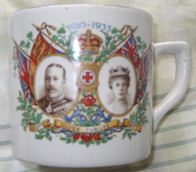
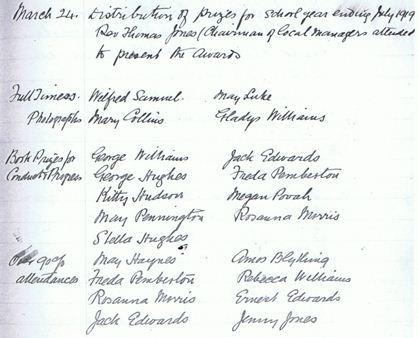
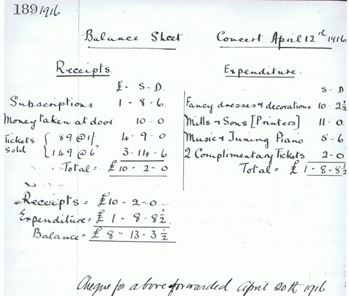
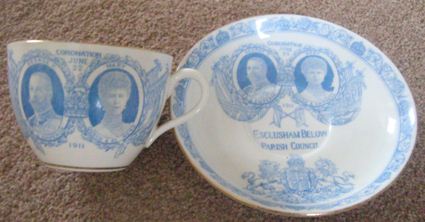
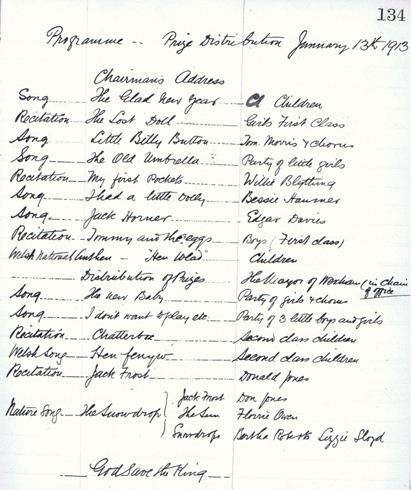
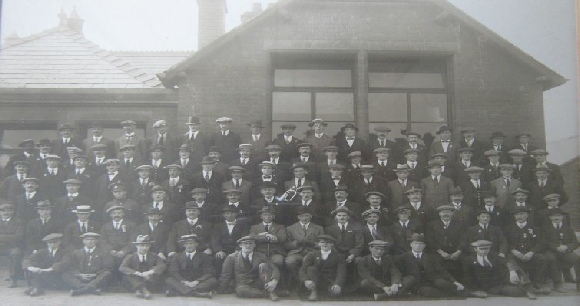
Circa early 1900’s-
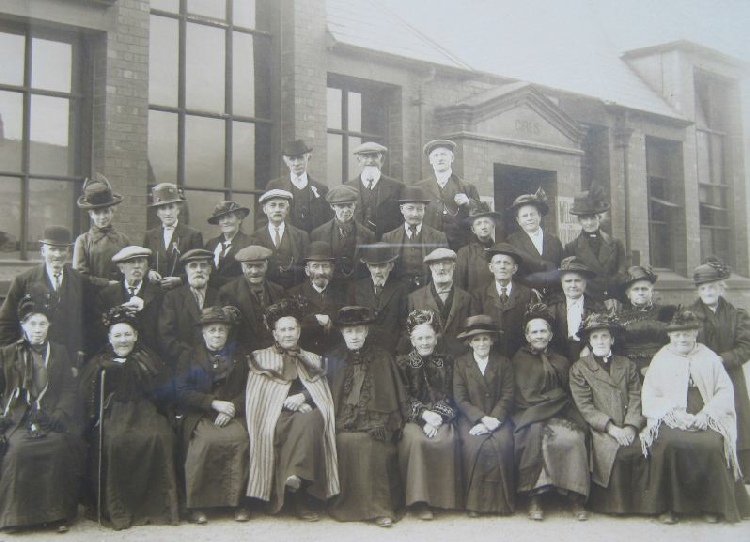
Circa early 1900’s-